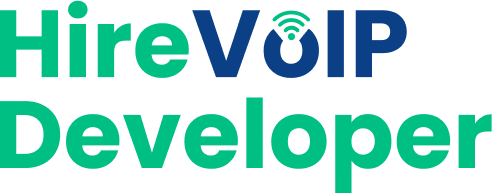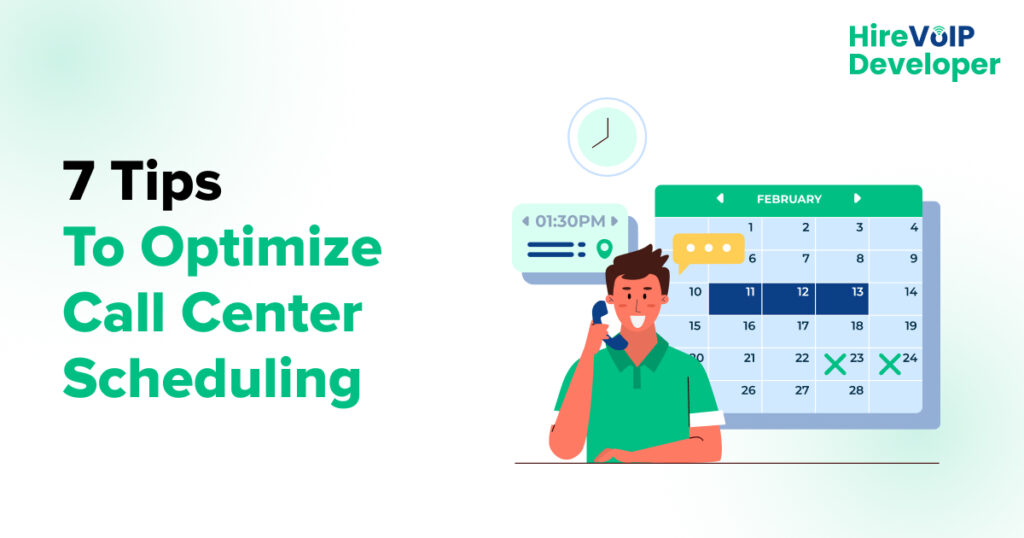| Quick Summary – The blog summarizes what call center scheduling is, its benefits, and seven practical tips to optimize your call center scheduling, boost efficiency, and enhance workforce productivity. |
Do you feel your agents are overworked or underutilized? Here’s how to fix it!
Call centers are the heartbeat of customer service, but let’s be honest – managing call center scheduling can feel like solving a never-ending puzzle.
Too few agents on shift? Customers get frustrated with long wait times.
Too many? You’re overspending on labor.
So, how do you strike the perfect balance?
Optimizing call center scheduling isn’t just about filling shifts. It’s about improving efficiency, reducing customer wait times, and making sure your agents stay happy and productive. Let’s dive into seven game-changing tips to optimize call center scheduling and keep everything running like a well-oiled machine.
What is Call Center Scheduling, and How Does It Work?
Call center scheduling is the process of assigning shifts to customer service agents based on anticipated call volumes, customer needs, and agent availability. It ensures that the right number of agents are available at the right times to handle incoming calls efficiently.
Call center scheduling software uses historical data, workforce analytics, and AI-powered predictions to create schedules that minimize customer wait times and maximize agent productivity. Well-structured call center scheduling systems help balance workload, reduce overtime costs, and improve customer satisfaction by ensuring there are always enough skilled agents on hand.
What are the Benefits of Effective Call Center Scheduling?
Some common benefits of effective call center scheduling you need to know about –
- Reduced Customer Wait Times – A properly staffed call center ensures that customers spend less time on hold and receive faster resolutions to their issues.
- Improved Agent Productivity – Matching agents with the right tasks at optimal times enhances contact center efficiency and prevents burnout.
- Cost Savings – Avoiding overstaffing or unnecessary overtime reduces labor costs.
- Higher Customer Satisfaction – Faster service leads to better customer experiences and improved brand reputation.
- Better Work-Life Balance for Agents – Flexible and fair scheduling boosts agent morale and reduces turnover rates.
- Real-Time Adaptability – AI-powered call center scheduling software can adjust in real-time to sudden changes in call volume.
What are the 7 Tips to Optimize Call Center Scheduling?
The following are the 7 tips to optimize call center scheduling.
1. Leverage AI-Powered Call Center Scheduling Software
Gone are the days of manual spreadsheets and guesswork. AI-powered call center scheduling tools analyze past data, predict call volumes, and create efficient schedules in seconds. These advanced solutions can factor in agent skill levels, availability, and even expected peak times to create a seamless schedule that works for everyone.
Using scheduling software for call centers can reduce last-minute shift changes, minimize overstaffing, and ensure you always have the right number of agents available. Plus, AI-powered systems continuously learn and adapt, improving scheduling accuracy over time.
2. Analyze Historical Call Data for Smarter Planning
Want to create an optimized schedule? Start by looking at historical data. Review your call center’s peak hours, average handling times, and seasonal trends. This helps you anticipate call volumes and schedule the right number of agents to meet demand without unnecessary overtime.
Call center scheduling optimization becomes easier when you know what to expect. For example, if your data shows a spike in calls every Monday morning, you can plan accordingly by having more agents available during that time.
3. Implement Flexible Scheduling Options
Your agents aren’t robots – they have personal lives, preferences, and energy levels that fluctuate. Offering flexible scheduling options, such as split shifts, remote work, or self-scheduling, can increase employee satisfaction and reduce absenteeism.
Many call center scheduling systems now allow agents to swap shifts or request time off without disrupting operations. This not only improves work-life balance but also ensures that your team remains motivated and engaged.
4. Optimize Shift Overlaps and Breaks
One of the biggest scheduling challenges is ensuring smooth transitions between shifts. If shift handovers are messy or agents take breaks at the wrong time, it can lead to increased customer waiting times and frustrated callers.
A well-planned contact center scheduling strategy ensures that shifts overlap effectively to cover high-demand periods. Additionally, staggering breaks instead of scheduling them all at once keeps service levels consistent and prevents long queues.
5. Use Real-Time Monitoring and Adjust Scheduling On the Fly
Even the best schedules need adjustments. Unexpected spikes in call volume, agent absences, or technical issues can throw off even the most carefully planned schedules.
That’s why having real-time monitoring capabilities in your call center scheduling software is crucial. Supervisors can track call volumes and agent availability in real time, making quick adjustments as needed. Some AI-powered call center scheduling tools can even recommend immediate changes based on AI customer sentiments, such as calling in backup agents or adjusting break times to balance workload.
6. Prioritize Agent Skill-Based Scheduling
Not all agents have the same skills, and not all calls require the same level of expertise. Skill-based scheduling ensures that the right agents are handling the right types of calls, leading to faster resolutions and better customer satisfaction.
For example, if you have a high volume of technical support calls, it makes sense to schedule more experienced agents during peak hours. This reduces escalations, improves first-call resolution rates, and helps reduce customer waiting time in a call center.
7. Continuously Gather Feedback and Improve
Your agents are on the front lines every day. They know better than anyone what works and what doesn’t in your scheduling process. Regularly gathering feedback from your team can help you identify pain points and improve call center scheduling best practices.
Ask questions like –
- Do you feel your shift schedule is fair?
- Are there times when you feel overwhelmed or underutilized?
- Would you prefer different scheduling options?
Use this feedback to make data-driven improvements to your scheduling processes. Small changes can lead to major gains in efficiency and employee satisfaction.
Smarter Scheduling – Happier Agents + Satisfied Customers
At the end of the day, call center scheduling isn’t just about numbers – it’s about people. By leveraging AI-powered call center scheduling tools, analyzing historical data, and offering flexible scheduling options, you can create a system that benefits both your agents and your customers.
Conclusion
The right approach to call center employee scheduling ensures that you always have enough staff to meet demand while avoiding overstaffing. Plus, when you optimize call center scheduling, you reduce customer waiting times, improve agent morale, and boost overall efficiency.
So, are you ready to take your contact center scheduling to the next level with Hire VoIP Developers? Start implementing these tips today, and watch your call center run smoother than ever!
FAQs



